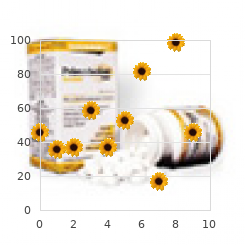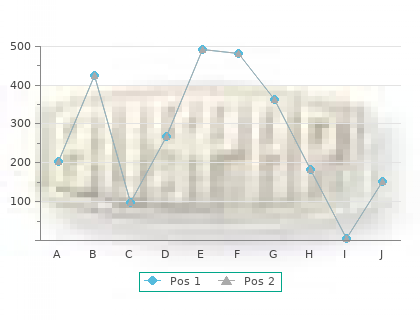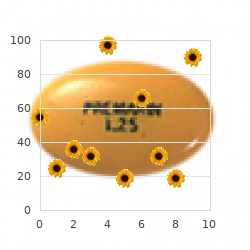Baclofen
By L. Navaras. School of the Visual Arts.
Craniosacral Therapy Craniosacral therapy was developed from the therapy practice of treatments promoted by Dr discount baclofen 10 mg with mastercard spasms during sleep. William Sutherland, an osteopathic physician in the early 5. Therapy, Education, and Other Treatment Modalities 177 1900s. This theory and practice was picked up in the 1970s and 1980s by Dr. John Upledger, an osteopathic physician who has heavily promoted and further developed the current practice of craniosacral therapy. The under- lying therapy is based on the rhythmic pulsation and flow of the cerebro- spinal fluid, which is influenced by breathing. This rhythmic movement is supposed to cause movement of the cranial joints and, in the vibration effect, movement of every joint in the body. Therefore, the craniosacral therapist can perceive this movement anywhere in the body, but it is most noticeable in the cranium and facial bones. The therapy involves palpation of the area to be adjusted to perceive the rhythmic movement. Then, using very light pressure, this rhythmic movement is altered to a better state. This change al- lows the individual to be more relaxed and to generally function better. There are no medical reports evaluating the efficacy of craniosacral therapy. This effect is probably similar to typical effects reported secondary to the sensory stimulation of many massage techniques. Feldenkrais Therapy In the early part of the 1900s, Moshi Feldenkrais grew up in Russia and Palestine, then was educated in Paris where he received a Ph. During this time, he developed a relationship with Jigaro Kano, who is the developer of modern judo. Feldenkrais’ combined enthusiasm for Newtonian physics, especially with movements of mass, and the movements of judo, he devised a therapy technique that claims to increase intellect and general well-being and to improve motor function. The technique uses a ther- apist who gives verbal instructions on specific movements. These movements use positions and stretching specifically directed at increasing the individ- ual’s awareness, flexibility, and coordination. There are no medical reports evaluating this therapeutic approach. Based on reports of patients who have received Feldenkrais therapy, it does seem to involve many of the typical ther- apy positions often practiced as functional maneuvers, such as raising from the chair with a specific posture. These movements are combined with mar- tial arts positions, which are often held for periods of time. The functional motor movements seem to be realistic as therapeutic approaches for some individual children; however, the theories and claims of benefits are totally unsubstantiated and unrealistic. There may be elements of this technique that an experienced physical therapist could use in a treatment plan. Feldenkrais treatment by an individual who is not trained in standard phys- ical therapy is not recommended. There is a great risk of raising inappro- priate expectations in families and patients, especially when the Feldenkrais technique is performed and advocated by individuals with no medical background. Review of research on therapeutic interventions for children with cere- bral palsy. Weindling AM, Hallam P, Gregg J, Klenka H, Rosenbloom L, Hutton JL. A ran- domized controlled trial of early physiotherapy for high-risk infants. A multivariate model of determinants of motor change for children with cerebral palsy. Accepted and controversial neuromotor therapies for infants at high risk for cerebral palsy. The period of susceptibility to the physiological effects of unilateral eye closure in kittens.


Salicylurate is the major urinary metabolite of aspirin in humans buy baclofen 25 mg amex spasms near temple. Benzoate has been administered to treat hyperammonemia associated with congenital defects, because urinary hippurate excretion tends to lower the free ammonia pool. Aspirin cannot be used for this pur- Reye’s syndrome is characterized pose because it is toxic in the large doses required clinically by vomiting with signs of progressive central nervous system 5. In addition, there are signs of hepatic injury and hypoglycemia. There is Chronic parenchymal liver disease is associated with relatively predictable changes mitochondrial dysfunction with decreased in plasma lipids and lipoproteins. Some of these changes are related to a reduction activity of hepatic mitochondrial enzymes. This plasma enzyme Hepatic coma may occur as serum ammonia is synthesized and glycosylated in the liver; then enters the blood, where it catalyzes levels rise. It is epidemiologically associated the transfer of a fatty acid from the 2-position of lecithin to the 3 -OH group of free with the consumption of aspirin by children cholesterol to produce cholesterol ester and lysolecithin. As expected, in severe during a viral illness, but it may occur in the parenchymal liver disease, in which LCAT activity is decreased, plasma levels of absence of exposure to salicylates. The inci- cholesterol ester are reduced and free cholesterol levels normal or increased. Reye’s A O syndrome is not necessarily confined to chil- – O dren. In patients who die of this disease, the 3 liver at autopsy shows swollen and disrupted mitochondria and extensive accumulation of lipid droplets with fatty vacuolization of cells Aspirin in both the liver and the renal tubules. O O O O C – CoASH C SCoA Glycine C 2 – H O OH OH OH ATP AMP, –SCoA Salicylate PP Salicyluric acid i B O C – O O O CoASH C SCoA Glycine 2 C H O– ATP AMP + PP –SCoA Benzoate i Hippuric acid Fig. CHAPTER 46 / LIVER METABOLISM 857 Plasma triacylglycerols are normally cleared by peripheral lipases (lipoprotein lipase or LPL and hepatic triglyceride lipase or HTGL). Because the activities of both LPL and HTGL are reduced in patients with hepatacellular disease, a relatively high level of plasma triacylglycerols may be found in both acute and chronic hepa- titis, in patients with cirrhosis of the liver, and in patients with other diffuse hepa- tocellular disorders. With low LCAT activity and the elevated triacylglycerol level described, low- density lipoprotein (LDL) particles have an abnormal composition. They are rela- tively triacylglycerol rich and cholesterol ester poor. High-density lipoprotein (HDL) metabolism may be abnormal in chronic liver disease as well. For example, because the conversion of HDL3 (less antiatheroscle- rotic) to HDL2 (more antiatherosclerotic) is catalyzed by LCAT, the reduced activ- ity of LCAT in patients with cirrhosis leads to a decrease in the HDL2:HDL3 ratio. Conversely, the conversion of HDL2 to HDL3 requires hepatic lipases. If the activ- ity of this lipase is reduced, one would expect an elevation in the HDL2:HDL3 ratio. Because the HDL2:HDL3 ratio is usually elevated in cirrhosis, the lipase deficiency appears to be the more dominant of the two mechanisms. These changes may result in an overall increase in serum total HDL levels. How this affects the efficiency of the reverse cholesterol transport mechanism and the predisposition to atherosclero- sis is not fully understood. With regard to triacylglycerol levels in patients with severe parenchymal liver disease, the hepatic production of the triacylglycerol-rich, very-low-density lipopro- tein (VLDL) particle is impaired. Yet the total level of plasma triacylglycerols remains relatively normal because the LDL particle in such patients is triacylglyc- erol-rich, for reasons that have not been fully elucidated. Non-esterified fatty acid (NEFA) levels are elevated in patients with cirrhosis. This change might be expected because basal hepatic glucose output is low in these patients. As a result, more NEFA are presumably required (via increased lipolysis) to meet the fasting energy requirements of peripheral tissues. Amino Acid Metabolism in the Liver The liver is the principle site of amino acid metabolism in humans.


Physicians who manage the motor impairments must always maintain a healthy suspicion of the diagnosis of CP buy baclofen 25mg online spasms right buttock, as sometimes a dual diagnosis may be present or the original diagnosis may be wrong. When progression of the impairments and disability, along with a child’s maturity, do not fit the usual pattern of CP, more workup is indicated. For example, a child may be diag- nosed with diplegia because he was premature and had an intraventricular hemorrhage, but, by age 6 years, the physical examination demonstrated very 28 Cerebral Palsy Management large calves with much more weakness and less spasticity than would usually be expected. This child would need to be worked up for muscle disease with the understanding that he can have both Duchenne’s muscular dystrophy and diplegic pattern CP. Alternatively, the child’s history may have been a red her- ring and he does not have CP, but does have Duchenne’s muscular dystrophy. There are children born prematurely who have intraventricular hemorrhages but are completely normal from a motor perspective. Etiology of Cerebral Palsy As noted previously, there are many causes of CP, and knowing the exact etiology is not very important for a physician managing the motor impair- ments. The etiology may be important when considering whether a child is following an expected course of maturation and development. Also, parents find the etiology important because it is part of coming to terms with the larger question of why the CP happened. Many etiologies can be separated into a time period as to when these insults occurred. For more detailed in- formation on the etiologies of CP, readers are referred to the book The Cere- bral Palsies by Miller and Clarke,1which provides much greater detail on this specific topic. Congenital Etiologies A whole group of congenital developmental deformities lead to CP. These deformities result from defects that occur in normal development and follow patterns based on failures of normal formation (Figure 2. A defect of the neural tube closure is the earliest recognized deformity leading to survival with motor defects. The most common neural tube defect occurs in the spine and is known as meningomyelocele. However, this lesion typically does not cause CP, but instead causes spinal-level paralysis. In the brain, the neural tube defect is called an encephalocele, and may be anterior, with a major mid- face or nasal defect. Anterior encephaloceles occurs most commonly in Asia, whereas posterior encephaloceles most often occur in Western Europe and America and affect the posterior occiput. This information suggests that many of these deformities may have unrecognized genetic causes. Most children with sig- nificant encephaloceles have very significant motor impairments, usually quadriplegic pattern involvement with more hypotonia than hypertonia. Segmental defects in the brain are called schizencephaly, meaning there is a cleft in the brain. Several patients with severe forms have genetic defects in the homeobox genes. Primary proliferation defects of the brain lead to microencephaly. How- ever, there are many causes of microencephaly, most involving toxins or infections, which are discussed later. Conditions in which the brain is too large are called megaloencephaly, which should not be confused with macro- encephaly, meaning a head that is too large. Etiology, Epidemiology, Pathology, and Diagnosis 29 A Figure 2. In the earliest stage, the neural plate differentiates from the ectoderm, then enfolds to create a neural tube. Failure of this enfolding causes neural tube defects (A).
10 of 10 - Review by L. Navaras
Votes: 296 votes
Total customer reviews: 296


